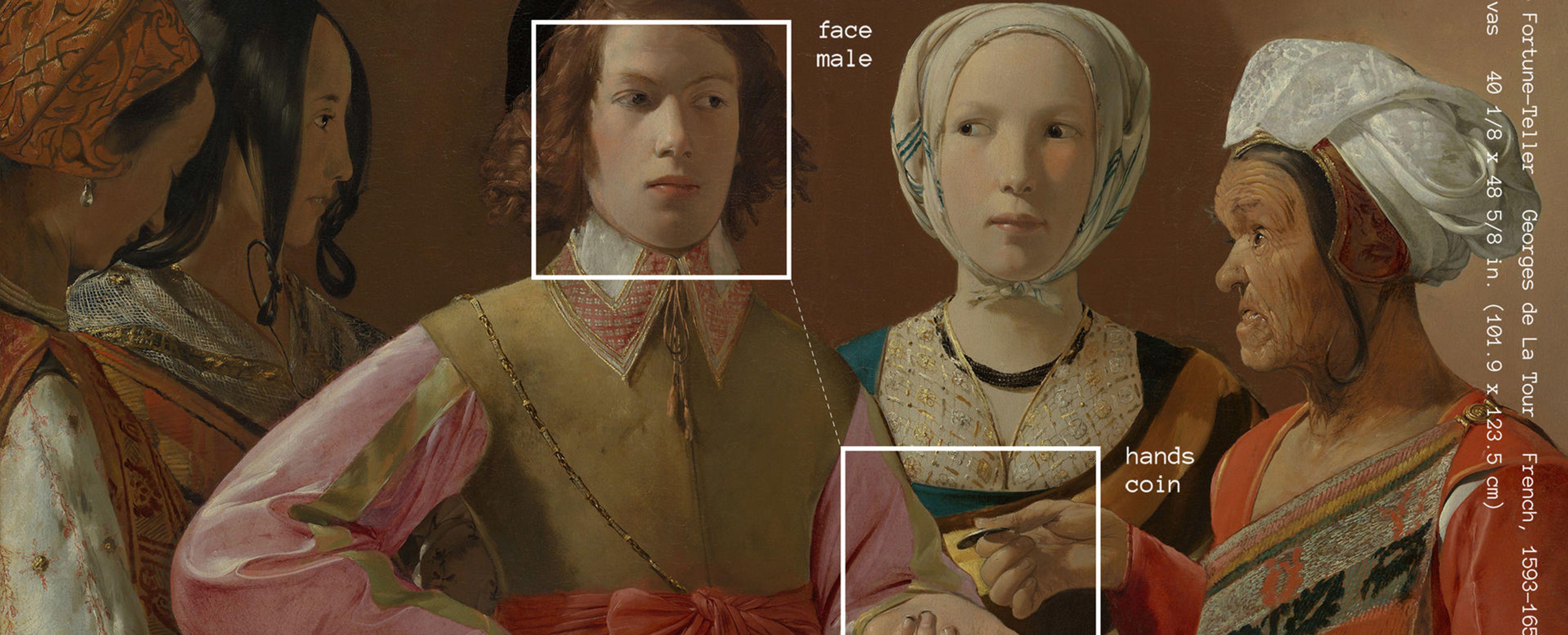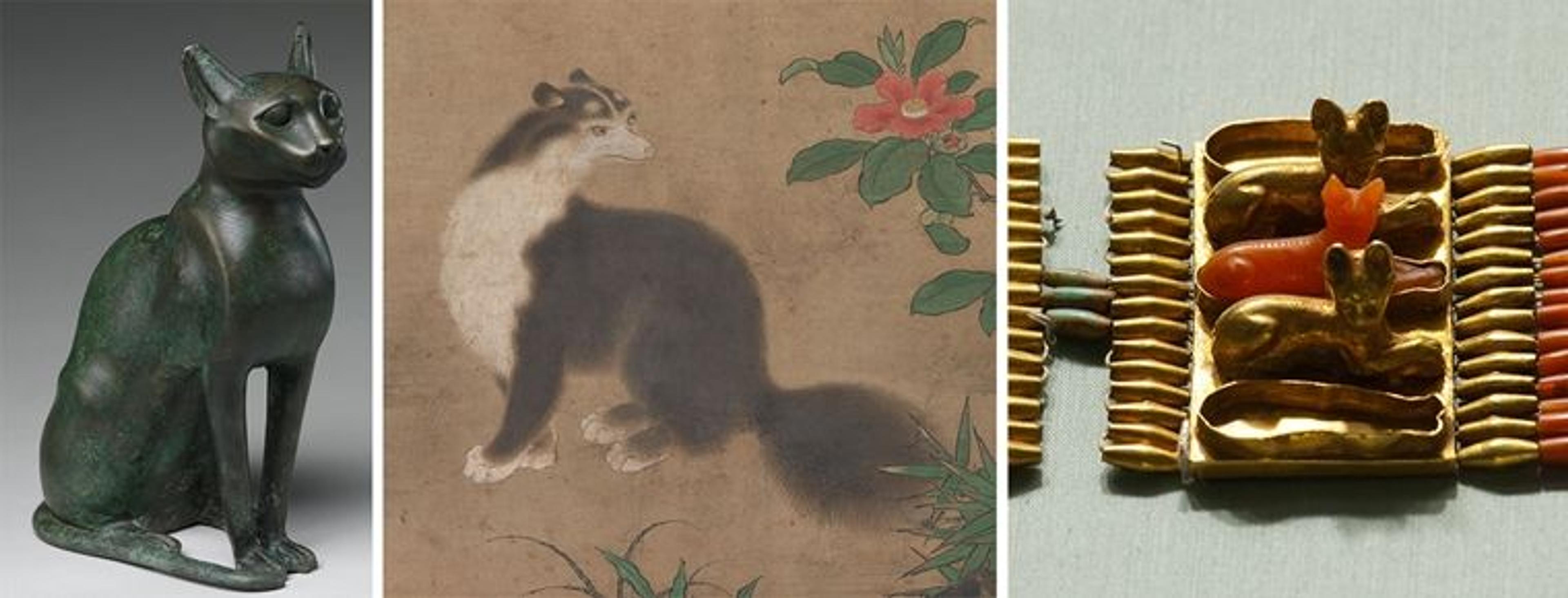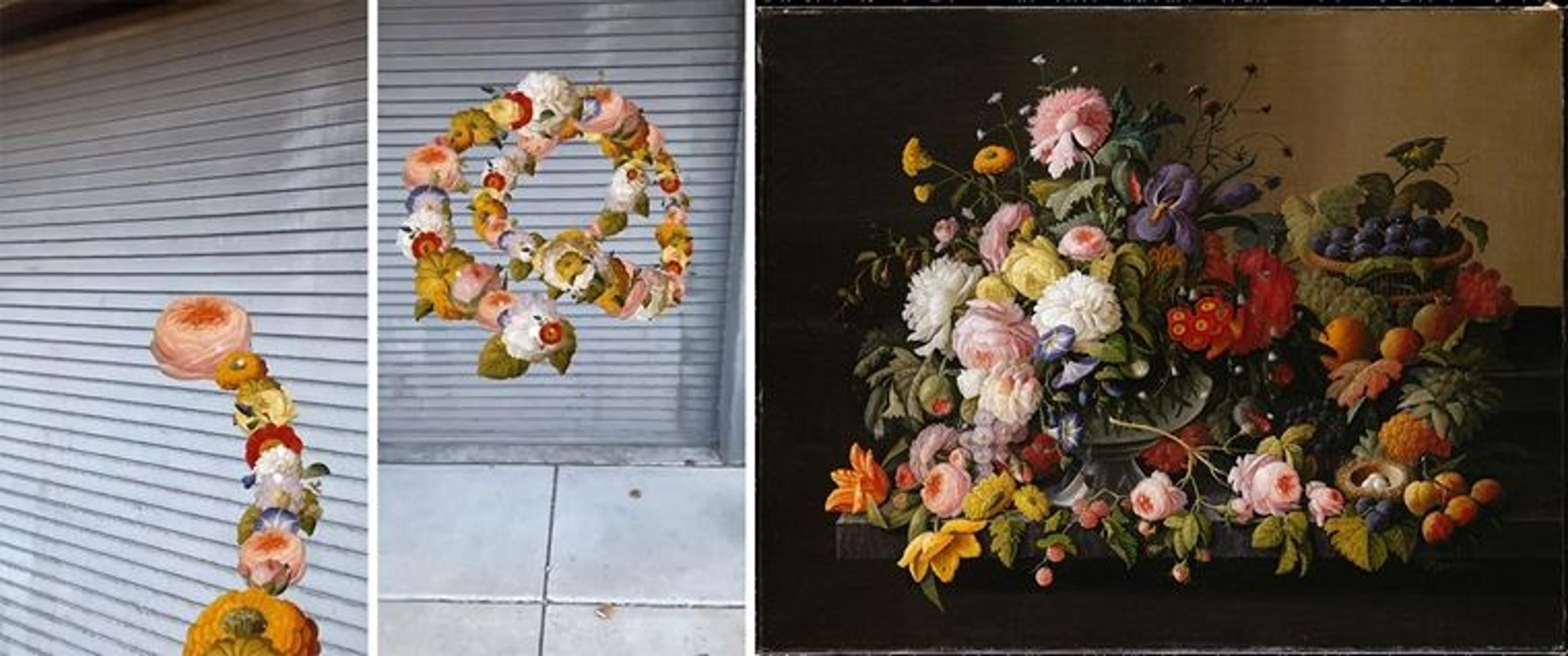Celebrating Three Years of Open Access at The Met

Georges de La Tour (French, 1593–1653). The Fortune Teller(detail), probably 1630s. Oil on Canvas, 40 1/8 x 48 5/8 in. (101.9 x 123.5 cm). The Metropolitan Museum of Art, New York, Rogers Fund, 1960 (60.30)
This February marks the third anniversary of the Met's Open Access program; it's been an extraordinary third year, one that has far outstripped our expectations and revealed the significant impact the program is making. Open Access has been a remarkable success: The Met's artwork has reached a phenomenal 225 million annual views on Wikipedia. A diverse range of users have employed the data for a variety of purposes; creators are developing new interfaces, as well as data visualizations that uncover fascinating new stories about our collection. Learning from our users' needs and behaviors, we are only just beginning to realize the program's potential for helping The Met reach a wider global audience (in sometimes novel ways). As we cross this important milestone, which coincides with the Museum's 150th anniversary, we'd like to reflect on some of the goals we've achieved with Open Access, and share our vision for the program's future.
Creating a Pipeline to The Met's Collection Data
Some background: when we launched the Open Access program in 2017, we released a basic set of metadata under a CC0 license. This includes object information (such as title, maker, culture, medium, date, and dimensions), artist information (such as name, nationality, birth and death year, and their role in creating the object), and links to related public domain images. This information is accessible to interested users via a downloadable .CSV file on our website (more about that later).
We have since launched an API (again, more about that in a moment), and with the help of our partners at Google and Wikimedia, a number of other features that help programmers, researchers, and artists process The Met's public-domain images. Feedback from programmers and researchers inspired us to develop filtering tools that can shape the data for specific purposes—we now have filters for objects with images, collection highlights, and objects by curatorial department. We also added keyword tags that identify specific subject matters (like cats!), providing new ways for users to explore and discover artworks.

A small array of objects associated with the keyword tag, "cats." Left: Cat Statuette intended to contain a mummified cat, 332-30 B.C. Egypt, Ptolemaic Period. Leaded bronze, 12 5/8 x 4 11/16 x 9 3/16 in. (32 x 11.9 x 23.3 cm). The Metropolitan Museum of Art, New York, Harris Brisbane Dick Fund, 1956 (56.16.1) Center: Uto Gyoshi (Japanese, active second half of 16th century). 右都御史筆 麝香猫図 Musk Cat (detail), second half of the 16th century. Hanging scroll; ink and color on paper. 29 15/16 x 18 5/16 in. (76 x 46.5 cm). The Metropolitan Museum of Art, New York, Mary Griggs Burke Collection, Gift of Mary and Jackson Burke Foundation, 2015 (2015.300.66) Right: Cuff Bracelets Decorated with Cats (detail), ca. 1479–1425 B.C. Egypt, New Kingdom. Gold, carnelian, lapis-lazuli, turquoise glass, 6 5/8 x 2 x 7/8 in. (16.8 x 5.1 x 2.2 cm). The Metropolitan Museum of Art, New York, Fletcher Fund, 1919–1922; Rogers Fund, 1922; Lila Acheson Wallace Gift, 1988 (1988.17i) (26.8.121a)
In service of our goal to provide unrestricted access to The Met collection for developers, students, and anyone with a sense of curiosity, we are continuously updating two key resources: our Met Collection API and our Open Access CSV. Here's a quick overview of what they are and how they're used:
API
APIs, or "application programming interfaces," are a means for apps to communicate with each other. Our API provides up-to-date information about each of our artworks on demand, so that users can request data about a specific work of art. This contrasts with our CSV, which contains all data for all objects, in a single file. So the API makes our collection more accessible, discoverable, and useful to developers, creators, and makers who don't want or need to download the entirety of the Museum's collection. Each month since its launch in 2018, the API has received an average of over three million information requests from more than two thousand users—an amount that has far surpassed our expectations.
One of the many applications that's since been built on top of our API is Cleo, which allows users to "search over 45,000 ancient Egyptian objects from multiple international collections by text, image, and location in Dutch and English." And in early 2019, The Met collaborated with Microsoft and MIT on a handful of AI web application prototypes, many of which are continuing to be developed by our partners, and are helping to inform our thinking about our own applications. We’ve shared some early and ongoing explorations using AI search here. Our API has also been incorporated into university curriculums and research efforts by learning institutions like the Parsons School of Design and the University of Virginia School of Data Science. The most widely impactful uses of the API so far include our integration with Google Arts and Culture, Pinterest, and Creative Commons, all of whom collate The Met collection with other collections, images, and datasets from around the world. This means millions of global users no longer have to know about The Met in order to connect with its collection; Our API has placed us on the platforms people globally use for their own discovery every day. This not only increases our chances of connecting them to The Met collection, it integrates The Met into both our everyday lives and the world's shared knowledge.
We have been especially pleased by the use of the API by individual creators around the world. We’ve seen playful Instagram filters pop up, including this one by XR artist Lauren Cason, based on this nineteenth-century still life by painter Severin Rosen in The Met collection. "I love that the Open Access collection democratizes museum access—you might not live in a major metropolitan area, you might not be able to afford a trip to a museum, you might not have time for a visit, but there is this enormous collection at your fingertips that you can pull from, be inspired by, work with, all for free online," says Cason.

Left: Two stills from an Instagram filter by XR artist Lauren Cason, which she designed using artwork from the Met Open Access program. Right: Severin Roesen (American, 1816–72?). Still Life: Flowers and Fruit, 1850-55. Oil on canvas, 40 x 50 3/8 in. (101.6 x 128 cm). The Metropolitan Museum of Art, New York, Purchase, Bequest of Charles Allen Munn, by exchange, Fosburgh Fund Inc. and Mr. and Mrs. J. William Middendorf II Gifts, and Henry G. Keasbey Bequest, 1967 (67.111)
Another fun use of the API is the Chrome extension, Art from the Metropolitan Museum of Art, created by a member of The Met's Digital Department, which displays a random work of art from our collection in a newly opened browser window. The extension gives its users the ability to organically uncover wonders within the collection with a clear promise: "Open a tab to discover something new and beautiful every day." Also, in connection with our 150th anniversary celebration, The Met Store ran a contest this year that asked contestants to design consumer products using open-access images from The Met collection. You can check out the winners here. The possibilities are limitless.
Open Access CSV
Our Open Access CSV ("comma-separated values") file provides the same information as the API, but in a format that allows users to analyze The Met collection in its entirety. The file can be viewed in a spreadsheet program, like Excel, and can be parsed using popular programming languages, such as Python, as well. The CSV tends to be more useful to data scientists, researchers, and students, but it's also a good training tool for people with no coding skills. Use cases for the CSV range from creating data visualizations to training computer vision models to recognize images.
Next Steps: Enhancing Collection Data and Creating Connections
Now that our API has a solid foundation of metadata, we're focused on tackling new challenges, like making improvements to our data's interface. How do we enable users to connect our data easily to other public datasets? And what data points can we add that will be interesting and provide the most utility to both researchers and people with more personal interests . . . or to get inspired?
Here's a list of some of the new improvements to our Open Access API and CSV that we plan to launch by the end of February 2020:
● We will provide links to Wikidata (a free database containing structured, multilingual data to support Wikipedia and other online resources) for artists and works in the collection, which will help connect our works to their semantic database, allowing users to tap in to their wealth of translated content.
● The Getty Research Institutemaintains structured resources intended to provide a standard, controlled vocabulary for use in the research of art and artists. Our Open Access data now contains links to two resources maintained by The Getty Research Institute: artists link to the Union List of Artist Names (ULAN), and our subject keyword tags link to the Art & Architecture Thesaurus (AAT). The Getty's databases provide standardized, controlled vocabulary for art researchers, thereby making it easier to connect with other datasets using the same standards.
● As part of our effort to enrich the data for research and exploration, we are also adding acquisition dates, data identifying artworks in the collection created by women, and references to The Met’s Heilbrunn Timeline of Art History.
We are constantly striving to enrich and improve our collection data, and to make The Met Collection one of the most accessible, discoverable, and useful collections on the internet. You can find the most updated version of the API on GitHub.
By linking our collection data to other datasets, we hope to create more connections between our works and other data out in the world. We want to make The Met collection more accessible to a large and diverse audience, regardless of whether they can make a trip to the Museum. If you are using (or getting inspired by) our collection data, we would love to hear from you. Please report feature requests and bugs on our Github issues page, and send information about your projects and applications to openaccess@metmuseum.org. Happy third anniversary to The Met's Open Access API, and here's to many more to come!
We would like to acknowledge additional contributions by Elena Villaespesa Cantalapiedra, Digital Analyst; Jennie Choi, General Manager of Collections Information Services; Maria Kessler, Senior Program Manager of Digital Partnerships; and Benjamin Korman, Producer and Editor.
This is the final post in a three-part series celebrating the third anniversary of The Met's Open Access API. You can view the rest of this series here.
Sofie Andersen
Sofie Andersen is the iSenior Manager of Digital Content & Editorial of the Digital Department.
Spencer Kiser
Spencer Kiser is the media technology manager in the Digital Department.